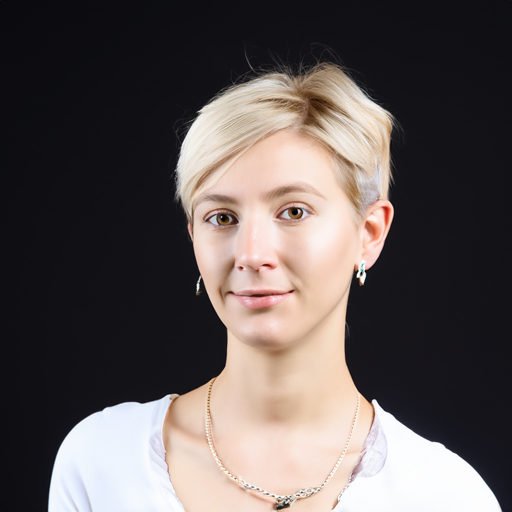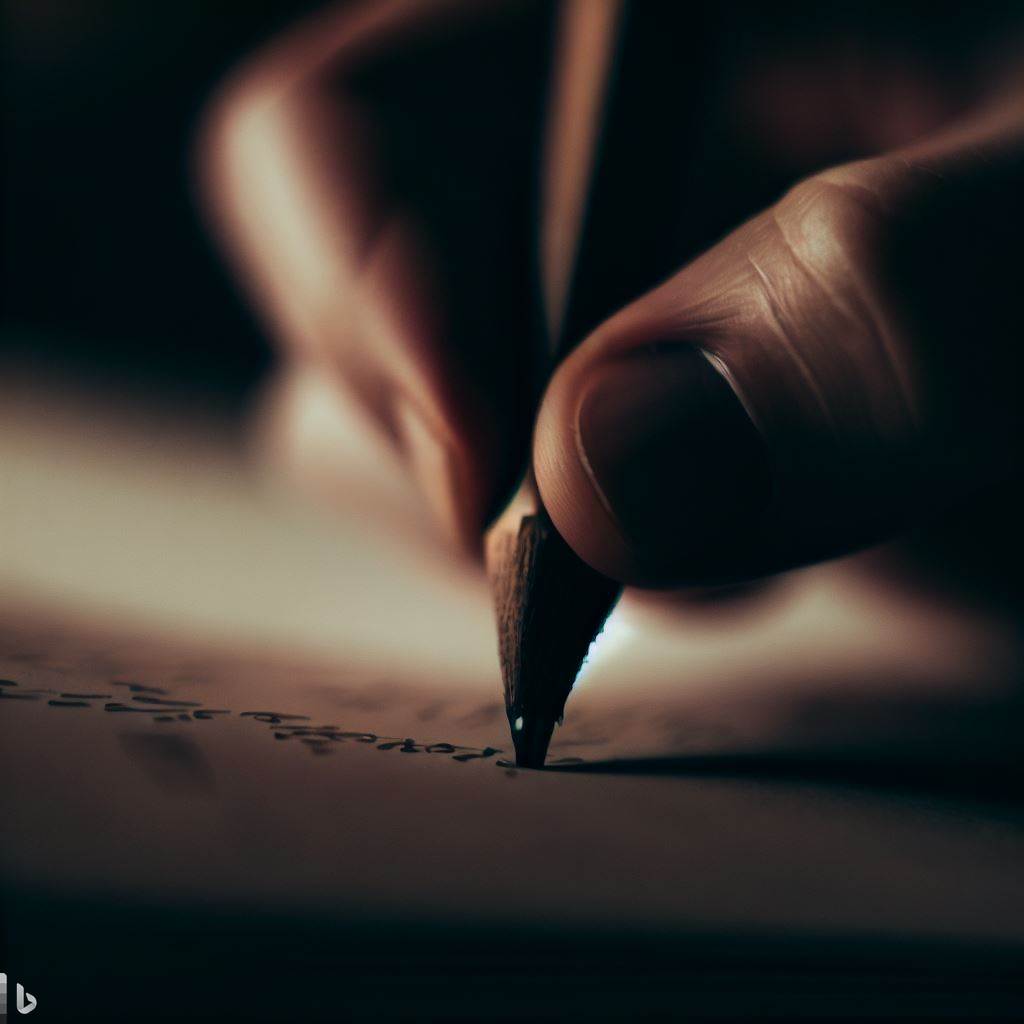Our object today is not the actual polaroid. It what was captured on a piece of equipment. A piece of equipment that thankfully never saw its intended use. That screen was developed for a nuclear exchange that could have ended the world. And whilst its link to photography isn’t initially obvious. It represents the first step in a path that would lead to a new art form. And rather than the Russians taking over it now might be the machines
Oddly that image and this one of mines are argueable the start and the current end of that path.
But what links them ?
Granted they are both of woman and they are being viewed on computer screens. But it’s not that.
The image above unlike the polaroid capturing the screen back in 1959 was not taken on a camera. In fact the woman does not exist. It is a computer generated image, made with some text prompts in the AI enabled Photoshop Beta.
But why we can do that owes a debt to our pin up. It was the first recorded image generated digitally.
The Pin Up & the Cold War
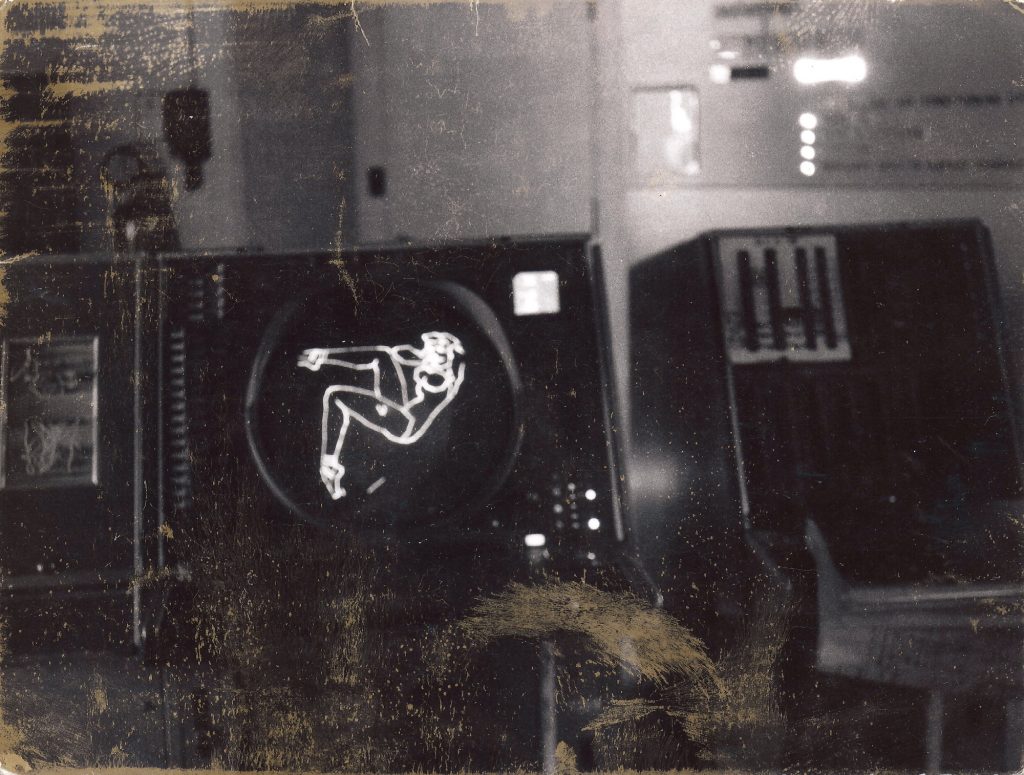
1959 began with Castro taking power in Cuba. The Titan intercontinental ballistic missile took it’s first flight. That would leading to man reaching the moon. But also lots of Titans with nuclear warheads sitting primed in underground silos. But in other bunkers, a certain scantily clad lady started appearing on computer screens.
SAGE or the Semi-Automatic Ground Environment was a series of networked computers. From the late 1950’s up to the 1980’s provided the backbone of the US. Largely unknown today it used computers with real time radar feeds. It examined what was in US airspace and rule out what was expected. It was intended to separate out expected objects like commercial jets. And pick up things that weren’t meant to be there (aka Soviet bombers)
SAGE’s digital backbone
As this The Atlantic article discusses, back in 1959 our image appears on the display of a AN/FSQ-7 supercomputer. These 250 ton bemouths were built as the backbone of SAGE. Importantly they were the second computer in the world to have an electronic display. By 1950’s standards these were blisteringly fast. Carrying out a then staggering 72,000 instructions per second. However one core on the laptop I type this on can do up to 4.2 Billion Calculations per second. And my Mobile phone’s fastest core can do 2.8 Billion/sec
Two of these giant computers were in each centre. So one at least could be online at any given point whilst the other was being maintained.
Above these computers sat around 90 work stations using the OA-1008 Situation Display (SD).

Using these would give operators a view of a slice of US airspace on the 19″ CRT displays.
So Where does the girl come in ?
Bored technicians.
It ended up being used as a test image when the computers were being switched over. But it was the first digital and arguable the first computer generated image.. The unknown programmer designer her ended up encoding her on 97 punch cards.
It was probably first used in 1958. But the only image of it was captured in early 1959. Taken by a then 21-year-old Airman First Class Lawrence A Tipton. Tipton used a polaroid which they used for recording screen outputs. Ironically making the first digital image copied onto an analogue device.
Hang on you said the first computer generated image in the true sense ?
It all defines what you mean as a computer. Remember this sequence from Hitchcock’s Veritgo ?
Those spiral are generated by John Whitney using a WWII M-5 anti-aircraft gun director. He linked this to an ink filled pendulum to create the spirals. Saul Bass used them to create the opening titles and a later dream sequence of the film. The film launched in 1958 are often labelled the first use of CGI in the cinema. It however used an analogue device which produced a an analogue output,

Other artists like Desmond Paul Henry would do similar work in the 1960’s (Henry used WWII Sperry bomb sights)
Oh if we’re going down that rabbit hole, there’s Jacquard
Jacquard the Loom Guy ?
Yup. Now there are some that would argue that Jacquard looms are the first computers. With you inputting instuctions on punchcards that. The loom processes those to make an output in the form of a patterned fabric.

But that feeds on to academic discussion about early computers. If we use the modern definition as a Digital computer that leaves SAGE’s massive beasts as the forerunner of photoshop
So who’s the Girl ?
That’s unknown. It was a typical pin up of the war and post war era.

The Atlantic and others link it to an image produced by famous pin up artist George Petty. Most likely for the 1956 Esquire Calendar. The December image from that calendar can be seen here. It strongly resembles our gal. which means our image could not have existed before 1956
From Cold War to Photoshop
And our lady would remain one of the rare pieces of digital computer generated arts until the 1960’s. A. Michael Noll began creating patterns on a Bell Laboratory computer in 1962. Later he would make images in the styles of Mondrian and Bridget Riley.
By 1965 there was enough work being done to produce digital art shows. But it would be the arrival of smaller computers with graphic user interfaces (GUI) that would change the game.
In 1973 Zerox produced the first graphic software in 1973. But it would need the rise of smaller PC. In 1984 the Mackintosh was launched. And by 1985 Andy Warhol was using an early image editor called pro paint on an amiga 500.
The Invisible Photograph: Part 2 (Trapped) from Carnegie Museum of Art on Vimeo.
The concept of being purely a digital artist was to grow.
Art and Realism
Long before SAGE was playing guessing games with the USSR, before Jacquard was building his machine , there has been a desire to represent the world. We know much about neolithic people from their art and which represent what was important to them.
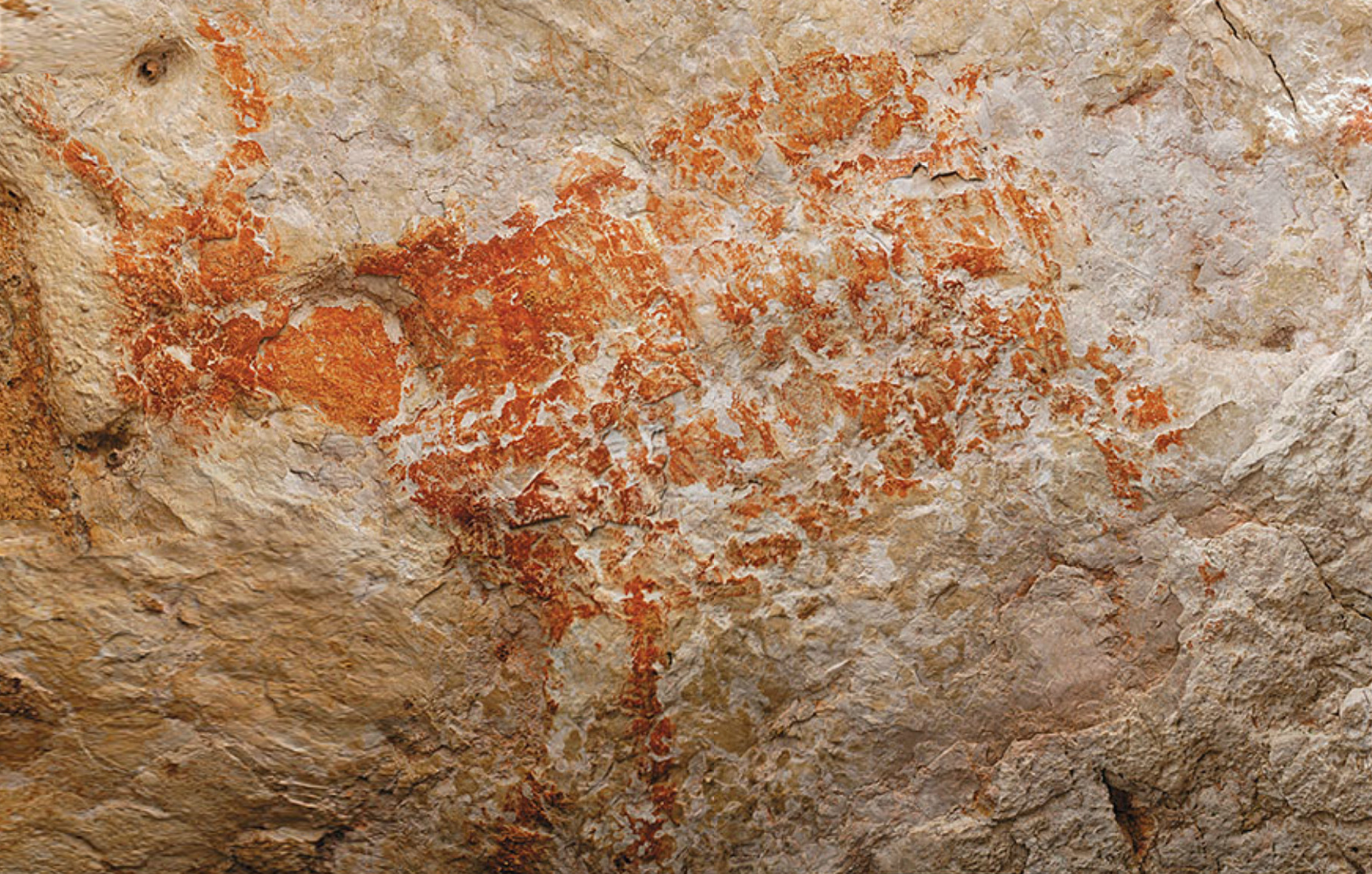
Art and illustration allowed us to see the world. There was a drift to producing increasingly realistic art

So even today some traditional art media artist, continue to challenge for more and more photorealistic images

Photoshop* til you drop (*other editors are available)
Nowadays the concept of Digital Artistry is well established. So Artist and rank amateurs like the rest of us are spoilt for tools. Even for photographers the concept of post editing using tools like lightroom or paint shop pro are well established.

Stylistically you find a range of types. From Manga, to high fantasy , to pixel art, and of course photo realistic or hyper-realistic images.
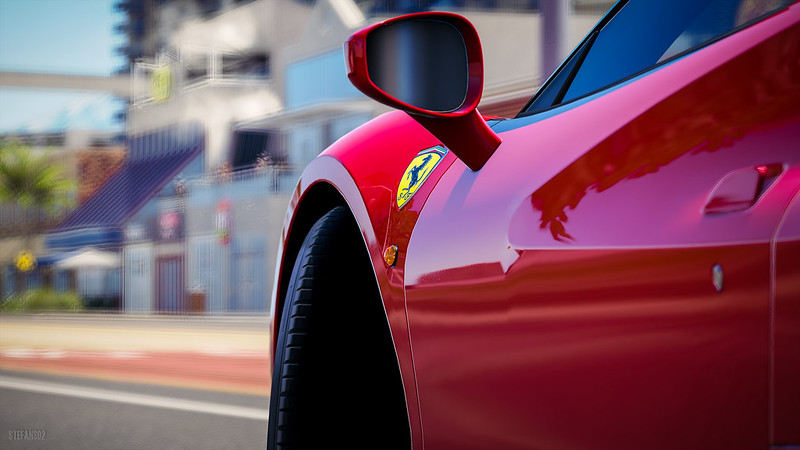
This work is licensed under a Creative Commons Attribution 2.0 Generic License.
There has been tremendous cross fertilisation with both the movie/TV and the computer gaming industries. Both artist and tech have moved both way. With several high profile digital artist today being involved in design on game graphics. Others work in CGI for the movie industry. The tech developed for one area flows into another. For example some of Alvy Ray Smith who worked on Super paint would go on to work for George Lucas and would later help found Pixar.
And there has been a increasing use computer not just providing teh Sketch pad but helping the edit.
The rise of the Machine
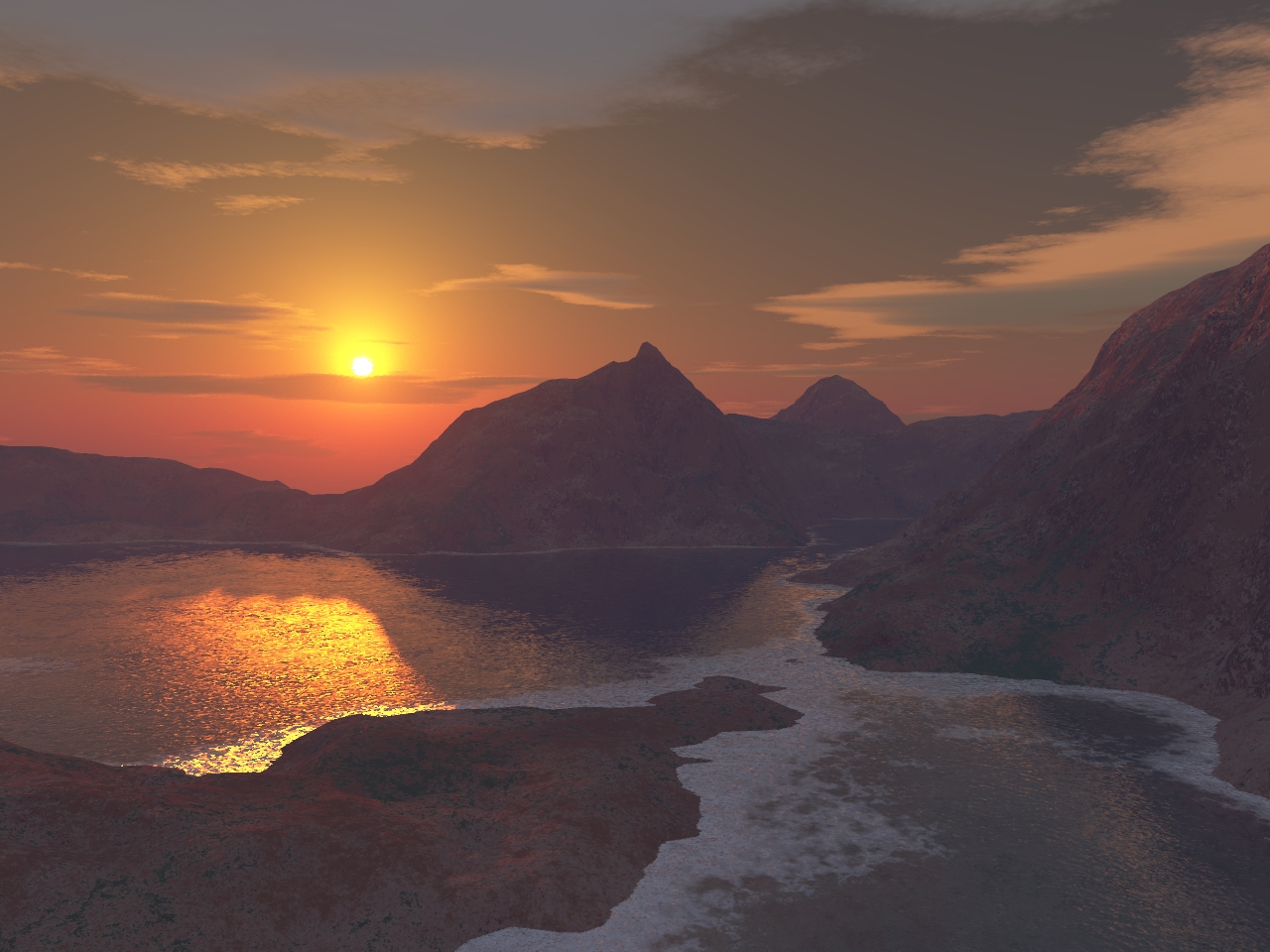
Increasingly tools used to create images helps render them by dealing with issues like lighting, shadows reflects automatically. The image above was created with Terragen a 3D scenery generator. This is used by both digital artists and the movie industry to create backdrops. The user sets key parameters they want and can do if they want fine adjustments. But the software will render an image based on those parameters. And will sort out lighting, water, shadow, reflections for the user.
And it get smarter. The image below was made using a mobile phone app running a mobile phone face swap app. One of many slightly more harmless version related to the deepface AI trend. The original image had the subject looking straight on with a completely different expression
Similar tech was long established in the movie industry. Most notably with Oliver Reed’s face being posthumously used in Gladiator (2000) but possibly back to the early 90’s
So the final step has been the arrival of full A.I. image creation which allows for photorealistic image to be created . These are not true photographs but something else. the term promptograms fits well.
But the path to this began with some bored techs back in the cold war,
But the story of AI images is for another day
Foot notes
Our polaroid image I assume is still in the possession of Mr Tipton. However it has been scanned and is widely found on the internet. Benj Edwards who wrote the piece liaised with Mr Tipton. Over on his site is the story and the repository of those scans. The original SAGE image remains the copyright of Mr Tipton. It is used in line with the principles listed in Benj’s post.
Parts of the SAGE system including a OA-1008 Situation Display can be seen at the Computer History Museum in Mountain View, California.


